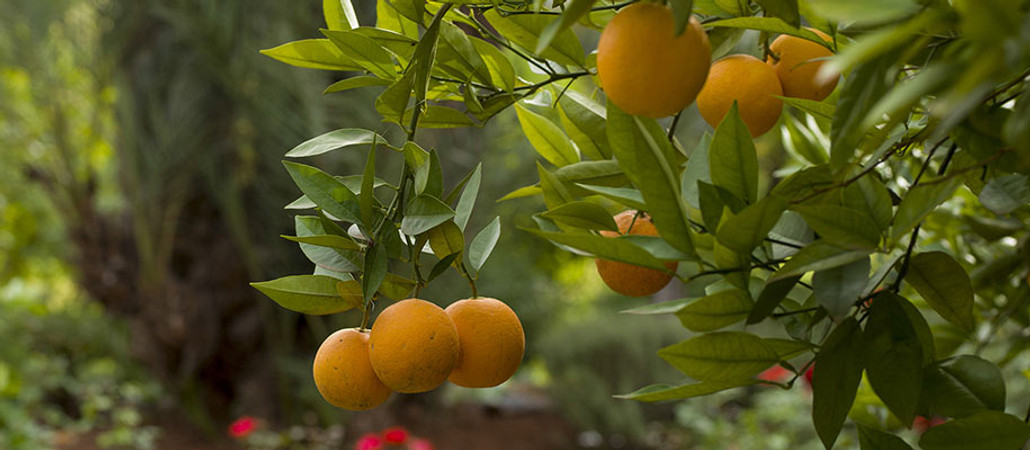
How to care for citrus plants in fall and winter
Posted by Grange Co-op on 17th Sep 2014
If you have citrus trees or plants, you’ve likely been enjoying your own oranges, lemons, limes, grapefruit and kumquats fresh off the branches as they've been growing and thriving in the warm summer temperatures. With fruits packing lots of Vitamin C and adding a tropical look to your garden, citrus can be a great addition to your home.

But now that fall and winter are approaching, if you live in cooler winter climates such as in Southern Oregon, it’s time to move plants inside and prepare them for dormant, survival mode to ensure they stay healthy for next summer.
To be clear, citrus are not adapted to climates as cold as ours in winter; they do not survive outdoors in Southern Oregon so simply moving them to a sheltered or sunny outside area is not an option. To keep a citrus alive throughout winter here, you have to acclimate the plant to the indoors, create a place for it, and adjust your maintenance to sustain a quasi-dormancy in the plant. It’s important to remember that you are not trying to stimulate growth during fall and winter; instead, you are keeping it healthy and alive.
If you happen to have a heated greenhouse, you can create a tropical climate for your citrus so that it won’t even know that it’s winter! In that case, care for the plant as you did outdoors – but you probably can back off the watering a bit.
Here are some basic steps for maintaining potted citrus trees and plants indoors for fall and winter:
- Slow down growth (slow the metabolism) by withholding any fertilizer from July on. You should also allow the plant to dry longer between waterings.
- Move the potted citrus to a semi-shaded spot for about a month before moving indoors.
- To ensure you don’t bring insects indoors, clean the plant thoroughly with 'insecticidal soap' on upper and lower surfaces of leaves and all the branches.
- Prepare a place indoors where your potted citrus can receive bright light and cool (40-55° F) temperatures. Remember: You are not trying to stimulate growth during this period indoors.
- Water only when the upper 2” of soil has dried. Remember, you are forcing this plant to go ‘dormant’ when it does not normally do so in its native environment. If you find lots of leaves are yellowing and falling off, the plant is probably being watered too often. Make sure each irrigation is thorough, then allow the plant to dry well before watering again.
- A light misting once or twice a week to increase humidity and discourage insects can help a citrus plant indoors.
Taking the above precautions is important because we are not in “citrus country” so survival can be a difficult task. Citrus originate in warmer climates such as the tropics, Southern California, Arizona, and Florida where fall, winter and spring are mild and warmer. Overwintering citrus is a challenge outside of those areas.
Which citrus plants do best in Southern Oregon?
 Some varieties do better than others. Kumquats (like the Nagami) adapt to more cold than any other citrus. Dwarf Improved Meyer Lemon is popular partly due to its ability to adapt to indoor growing for the winter. Oranges and grapefruit, on the other hand, are notoriously difficult. The hardiest varieties include Dwarf Improved Meyer Lemon, Eureka Lemon, Bear’s Seedless Lime, Dwarf Washington Navel, Calamondin, and Kumquat.
Some varieties do better than others. Kumquats (like the Nagami) adapt to more cold than any other citrus. Dwarf Improved Meyer Lemon is popular partly due to its ability to adapt to indoor growing for the winter. Oranges and grapefruit, on the other hand, are notoriously difficult. The hardiest varieties include Dwarf Improved Meyer Lemon, Eureka Lemon, Bear’s Seedless Lime, Dwarf Washington Navel, Calamondin, and Kumquat.
Should I prune my citrus during colder months?
Prune only as needed to shape the plant after new growth has begun in spring. Cut out dead or overlapping branches. Sheer back lightly to maintain the size when potting up to a larger container is not desirable.
When should I repot my citrus plant?
Spring, after new growth has begun, is the time to repot a citrus plant if it’s outgrowing its pot. Move up only one small size at a time; moving to a big tub with lots of new soil around the root ball is a recipe for overwatering and sometimes terminal problems. Grange Co-op has soil and fertilizer specifically for citrus!
The bottom line is that caring for a citrus during fall and winter can really test your green thumb. Overwatering citrus is a challenge and not always successful. But if you follow a few basic steps, your odds of success are greatly increased.
